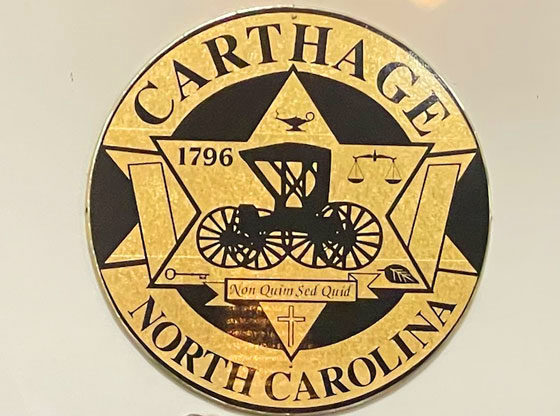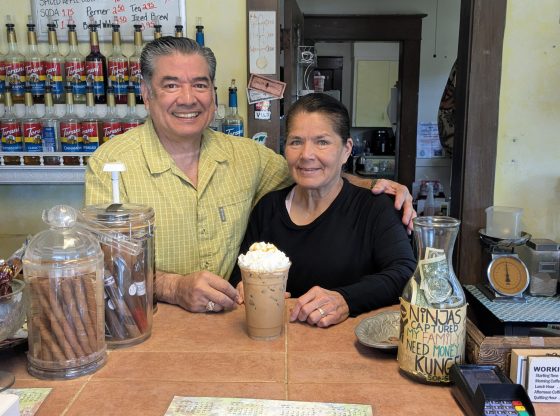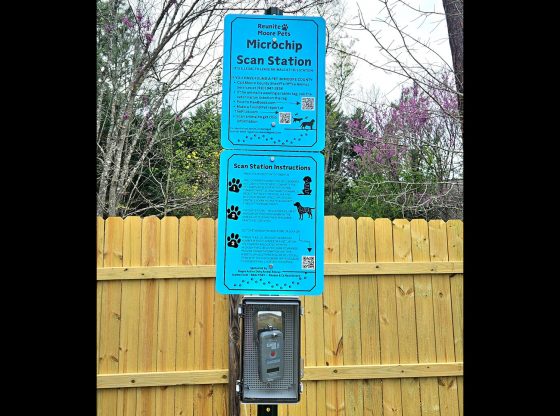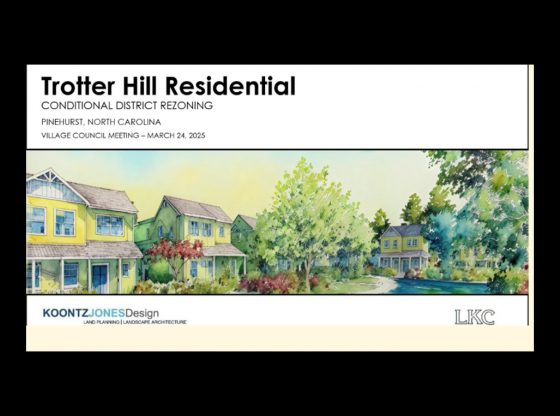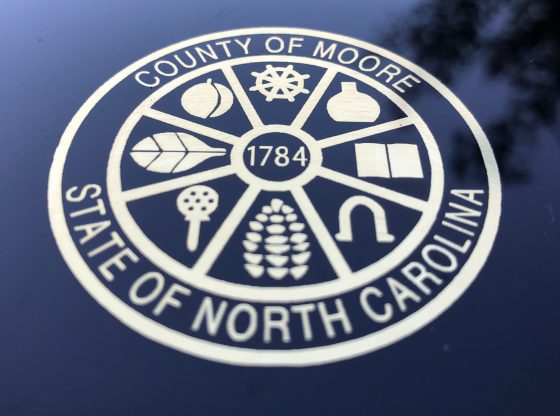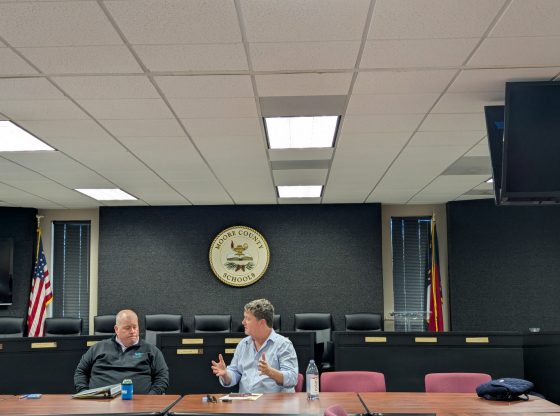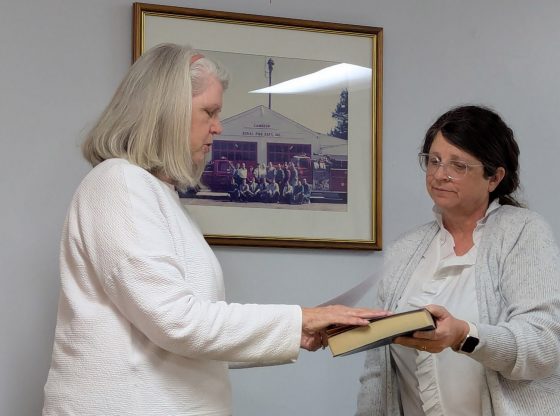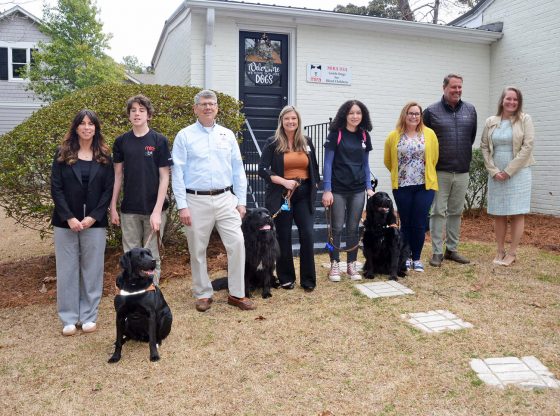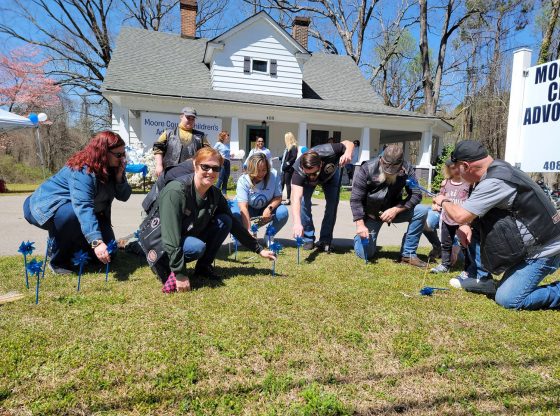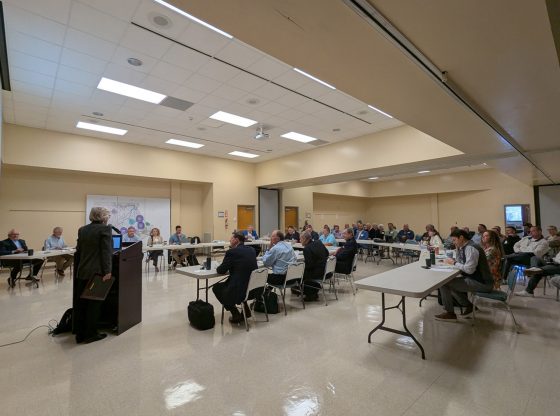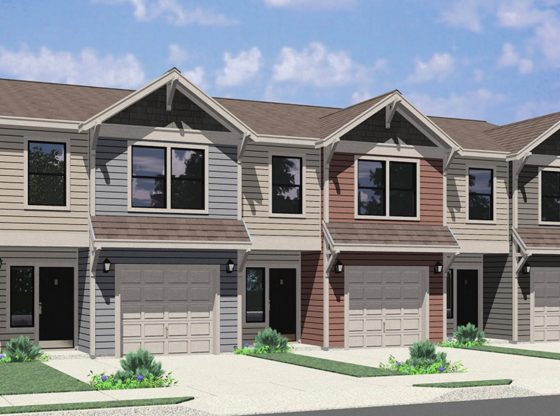On Aug. 19, the Carthage Board of Commissioners held a meeting at 6:30 p.m. to discuss a full agenda of community affairs. The evening’s topics included a public forum, a presentation from the Central Pines Rural (Transportation) Planning Organization, the installation of an upcoming day of prayer, and other smaller civic matters.
Public forum: Historic Preservation Commission
The focal point of the evening was the public forum. A newly established Historic Preservation Commission has sparked debate and unrest among homeowners in a new proposed historic district in Carthage. The meeting room was packed to capacity, with concerned residents hoping to make their voices heard.
A man named Travis, a longtime resident who has lived in two historical homes in Carthage over the past decade, was one of the first to voice his apprehensions. Travis expressed deep concern about the potential implications of the committee, particularly regarding the stringent regulations it could impose.
“We have lots of rules and regulations based on public safety, but these rules being set forth are none of these things,” said Travis. “They’re just based on looks. A small group of people gets to determine what looks OK.”
He argued that while historical preservation is important, the proposed mandates, focused primarily on aesthetics, could be overly burdensome for homeowners. He questioned the necessity of such a commission, suggesting it could lead to increased financial strain for residents, potentially pricing them out of their homes, and every speaker thereafter agreed.
Another historic homeowner concurred, and though she voiced her support for historic preservation, she feared that the new regulations could make it difficult for middle-class families to afford to live in the historic district.
Travis cited examples from similar ordinances in neighboring areas, which have proven costly and restrictive, forcing homeowners to make expensive changes to meet specific aesthetic standards.
“For the record, there are no design standards at all,” said Carthage Town Manager Emily Yopp. “They haven’t been made. Don’t compare Carthage to Pinehurst; we’re not Pinehurst.”
In an impromptu back-and-forth debate with the commissioners, residents continued to voice their concerns. Residents were particularly displeased about what they felt was a lack of communication. Historic homeowners thought that they were not adequately informed about the changes that could affect them and the lack of involvement of residents in the commission’s decision-making process.
Yopp responded to the concerns by reasserting that the committee is still in the early stages, having only held two meetings so far.
Carthage Town Clerk Kim Gibson explained the availability of information on the town’s website and encouraged residents to join the “Sunshine list” for email updates.
However, this prompted further discussion about the accessibility of information, with some residents pointing out that not everyone has internet access and suggesting alternative methods of communication, such as physical mail or public notices.
When one resident explained that not everyone has internet access, Yopp advised speaking with neighbors to stay informed.
Additionally, Yopp told the audience, “Any rules that affect planning and zoning have to have a public hearing – this is months if not a year of work.”
“I don’t think anyone’s confused about the fact nothing has happened yet; we’re trying to say we don’t want this,” Travis told the commissioners.
“You don’t want something you don’t know anything about,” countered Mayor Jimmy Chalflinch.
As the public forum closed, the commissioners encouraged concerned residents to attend the Historic Preservation Committee meetings to make their voices heard.
Regular Agenda Items
After the public forum closed, the commissioners transitioned to the scheduled meeting agenda.
A presentation was given by Karyl Fuller, principal planner for the Central Pines Rural Planning Organization (CPRPO). The CPRPO works with local governments in several counties, including Moore, to plan rural transportation systems and advise the NCDOT on policy.
Fuller explained that prioritization and project selection are based on data-driven scores, considering factors like congestion and safety. However, even high-priority projects might not be funded immediately due to a long, competitive, and costly process.
When Carthage Commissioner and Pro-Tem Mayor John McDonald asked for clarification on the $450 million in debt accrued by Moore County’s “Region,” Fuller explained that Moore County shares this Region with Charlotte.
McDonald asked how and if the debt would ever be dealt with. Fuller revealed that projects will have to be “uncommitted,” meaning the NCDOT will take current projects away. “There will be 10 or 12 counties that will likely lose something,” said Fuller.
“There are a lot of large municipalities [in this Region],” observed McDonald. “Moore County will be on the short end of that stick.”
“I can’t say,” replied Fuller.
The commissioners were left to consider whether they would like to proceed with any proposed projects, which would require the nearby municipalities of Cameron, Robbins, Vass, and Carthage to also agree on the projects.
Following the CPRPO presentation, several agenda items were briefly discussed and approved.
*A resident requested a townwide day of prayer and unity before November. Historically, these days of prayer have been implemented in times of national concern, a tradition that dates back to the 1700s, according to Chalflinch. The request was granted, and an event will be held on Saturday, Oct. 19, at 11 a.m. in Nancy Kiser Park.
*The Carthage tennis courts will be updated to include pickleball courts. “Utilizing the tennis court at Nancy Kiser Park and converting it into a split court featuring pickleball courts on one side and a tennis court on the other would be ideal to allow the most functionality of the space for both sports,” read Yopp. The part will now feature two pickleball courts and one tennis court that can also be converted into a pickleball court.
*Updates were made to the verbiage of the town’s noise ordinances. The old wording was “vague and unenforceable,” so the ordinances were made more specific, covering four categories: construction, music, loud exhaust, and general.
*Permission was granted for two new duplexes to be built over the old Carthage swimming pool. The lot was noted to have been unsightly and a breeding ground for mosquitoes previously, so most of the commissioners present welcomed the change.
*Regarding the arts in Carthage, updates were made to the ordinances surrounding murals and other public art, allowing for more lax guidelines for who may apply to display art, which now includes sculptures, paintings, and other media. The N.C. Museum of Transportation was granted an extension for the loan of the Tyson-Jones Buggy, allowing it to stay on display.
~Written by Sandhills Sentinel Assistant Editor Abegail Murphy.


